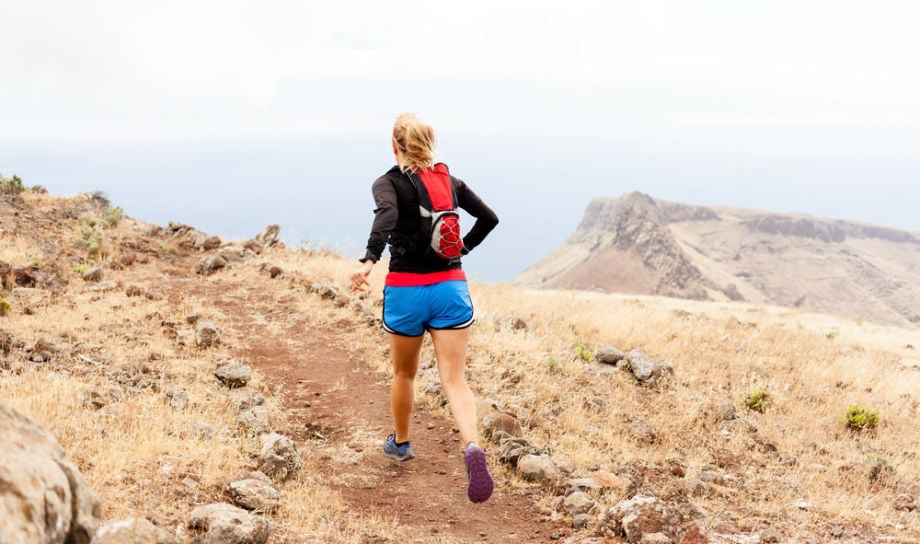Moving Beyond the Marathon
There's Something More Out There, and It's Calling Your Name.


For many runners, the marathon is the ultimate running accomplishment. For a small but growing contingent, it’s seen as little more than a stepping off point, a launchpad into a world all its own, the world of the ultramarathon.
An ultramarathon is simply any race longer than the 26.2 miles run in a marathon. Typically, these races are run off road, and the most common distances are 50k, 50 miles, 100k, and 100 miles. In order to be a official finisher racers must cross the finish line before a predetermined cut-off time that can be 24 hours or more. Navigating trails can be difficult, aid stations are few and far between, and it’s not uncommon for racers to hallucinate while running. So why would anybody want to run an ultra? In the words of Everest explorer George Mallory, “Because it’s there.”
Here’s what to expect when you step beyond the marathon.
Your training will vary greatly depending on the distance and terrain of your race. The 50k distance can be achieved with minor adjustments to your marathon training plan and the incorporation of trail running. If your race is longer, you will probably be running 5 or 6 days a week and will likely be running twice a day at times to meet volume demands. While this may seem daunting, it’s somewhat of a relief to know that almost all of your miles are done at a comfortable, aerobic pace. This helps with recovery and reduces the likelihood of injury as you pour on the miles.
Most marathoners never run a full 26.2 miles in any training session. Likewise, you will not cover your full ultramarathon race distance ahead of time. In fact, you may never run more than 1/3 to 1/2 of your race distance during any one training session. You will compensate for this by incorporating back-to-back long run days and training your legs to run when fatigued.
For other race distances, a goal pace can be determined by adding time to your pace from a previous shorter race. Ultramarathon is too variable to follow the same pattern. Your pace will certainly be slower, but how much slower depends on the course elevation and other factors.
For your first ultra, you can start by calculating pace based on the cut-off time. For example, a 100-miler with a 24-hour time limit means you have to average 14:24 per mile. Of course, this doesn’t take into consideration any time that you will be stopped at aid stations. If you spend 1 hour stopped, you will have to average 13:48 while you’re moving. If you stop for 2 hours total, you have to maintain a moving average of 13:12 per mile, and so on.
Your pace will also fluctuate a great deal during the race. When climbing mountains or picking your way through the woods, you may be walking. When faced with an downhill or flat section, you may end up running faster than your regular marathon pace. For this reason, ultramarathoners often base their splits and time goals on distances greater than a mile.
Some ultra races allow friends to join you on the course and help pace you toward the finish. This can be a welcome relief after hours spent running alone or, even tougher, alone in the dark.
Because aid stations are spread apart, ultra runners carry food and hydration with them. The most common systems are backpacks, waist belts, and handheld bottles. It is important to properly plan the amount of food and drinks you will need as well as when and where you will be able to refill. Aid stations may offer real food, like soup or potatoes, or serve as meeting points where your support crew can bring you anything you need. Aid stations are also a good place to swap out socks, shoes, or other gear during the race.
When planning your nutrition strategy, follow the same steps you took during marathon training. Map out what you need, experiment with anything you will ingest during the race ahead of time, and put your strategy into practice on all your long runs.
This varies by race distance, terrain, weather conditions, and personal constitution. In addition to the muscle aches you’ve come to expect from road racing, you may also be dealing with sprained ankles/wrists, bruises from falling on the trail, painful blisters, and abrasions. Make sure all wounds are cleaned out right away and monitored closely for infection. If you drank any untreated water along the way, you will also need to monitor for or take steps against parasitic infection. Other than that, just pay extra close attention to your body and let it tell you when and how it’s ready to get back to running.
Christopher McDougall’s 2009 book Born to Run exposed many people to the idea of ultrarunning (and drinking chia seeds) for the first time. It explores the origins of human running and tells the story of the Tarahmara, an indigenous Mexican tribe who routinely run ultra distances without getting injured. If you haven’t yet read Born to Run, it’s worth picking up a copy for those few spare moments you won’t be training for your ultramarathon.





